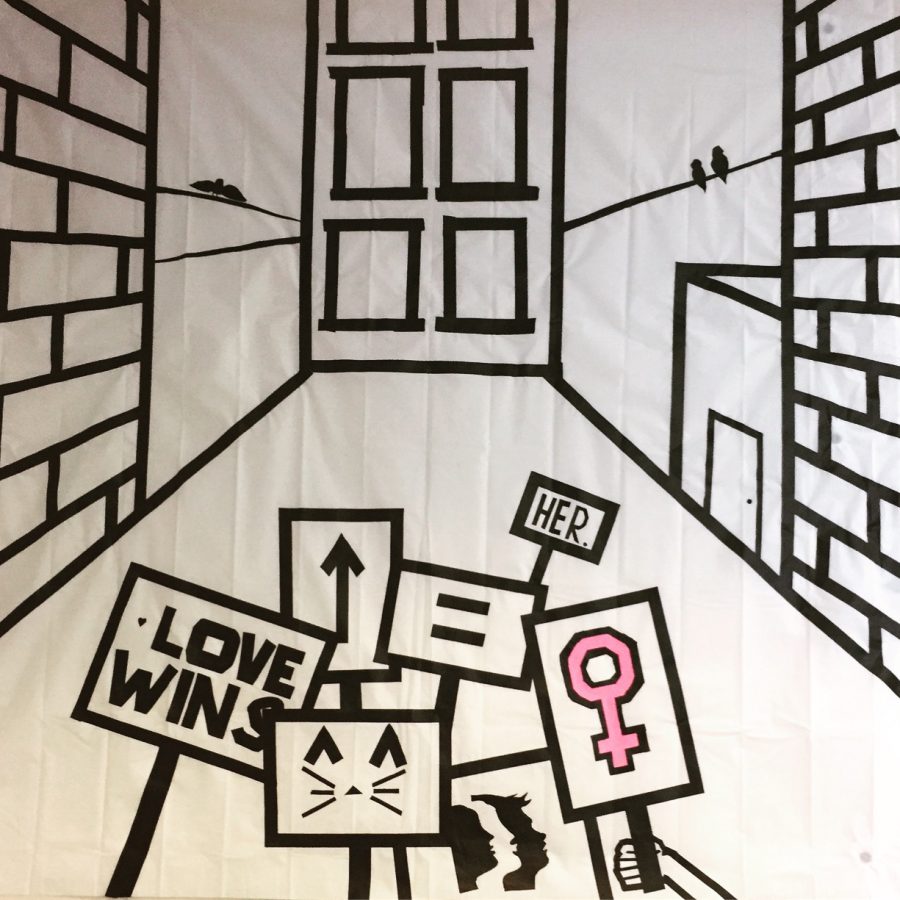Students voice opinions, express views through art
Women’s March Mural created by Seniors Julianne Sackett, Shannon Damiano and Delia Noone.
September 15, 2017
From duct tape to collage, the prevalence of the arts at CHS drives many students to express their opinions creatively.
Seniors Delia Noone of Middletown, Shannon Damiano of Spring Lake Heights and Julianne Sackett of Rumson all took Illustration and Design last year. Their assignment: use tape to create perspective. The result: a different kind of perspective that stuck. Their piece displayed a scene from the Women’s March to promote women’s rights in the modern world.
“It wasn’t our initial intention to be political, but art is supposed to mean something to whoever is making it,” Noone said. “Women’s rights were something that we all felt passionate about.”
“The conversations that were generated by this installation are what makes art so important,” Shelley Ortner, who taught the class, said. “Students can use visual art as their voice in addressing how they view the world around them much like authors, songwriters, and filmmakers reflect important world events through their craft. They are all important outlets for recording history.”
Another senior, Caroline Savage of Brielle, chose newspaper clippings and pictures of her favorite causes as the medium for part of her self portrait.
“I feel like activism and politics are a big part of my life,” she said, explaining why they helped represent herself. She added that she used orange in the piece to emphasize her fiery passion for the things she loves.
“I encourage self expression in my projects as often as possible because I believe it helps students make connections to their work and be more interested in the final outcome,” Ortner said. She added that students are limited in high school to what is deemed “acceptable to school policies.”
Expressing your opinion through art does not make bill into law. But activist art has long been discussed, debated, protested, and praised. In May, Austin-based artist Mike Mitchell posted an image of the number 45, meant to represent the 45th president Trump, turned into a swastika. The image has been retweeted 12,000 times, made into posters and buttons and used by numerous protesters, according to Mitchell’s twitter page.
“Images can carry the meaning the behind the message in a way that numbers never can,” explained a Huffington Post article about the history of activist art.
“When it comes to politics, people may shy away from saying what they believe because they are afraid of backlash,” Noone added. “ Art is a way to make a point without having to say something out loud.”




